Scaffolding Companies Addis
Best Scaffolding Erectors in Addis
Receive 3 FREE Scaffolding Experts quotes for your project today! Compare profiles, reviews, accreditations, portfolio, etc... and choose the best deal.

Sutherlands
4.2443 reviews123 Main St, Fort Smith, 72901, USSutherlands is a lumber company with a long history of providing quality building materials to customers in the Midwest. Our mission is to offer a wide selection of products at competitive prices, while providing exceptional customer service. With over 100 years of experience, we have established ourselves as a trusted partner for builders, contractors, and homeowners alike. Our team of experts is dedicated to helping you find the right materials for your project, whether it's a small renovation or a large construction project. We offer a variety of services, including custom cutting, delivery, and installation. At Sutherlands, we pride ourselves on our commitment to quality, service, and community involvement. We are proud to be a part of the communities we serve and look forward to serving you.
- Services
- Why Us?
- Accreditations
- Our Team
- Testimonials
- Gallery
Get Quote
Light Bulb Scaffold
1314 Hoadley St., Shreveport, 71104, USLightbulb Scaffold is a division of Non-Stop Scaffolding, providing the ultimate light bulb changing and maintenance scaffolding system. Our system is designed to solve ceiling access problems in various settings, including auditoriums, churches, theaters, and lecture halls. With its innovative Spanner Kit, our system adapts to virtually any floor layout, making it easy to change light bulbs, perform A/V/L work, and other maintenance chores. Our system is recognized by industry leaders and has been used by Madison Square Garden, the US Government, and many universities and schools. It is easy to assemble, safe, and sturdy, meeting all OSHA regulations. The system is also easy to transport and store, with two rolling racks that fit through any 3-foot doorway.
- Services
- Why Us?
- Accreditations
- Testimonials
- Gallery
Get Quote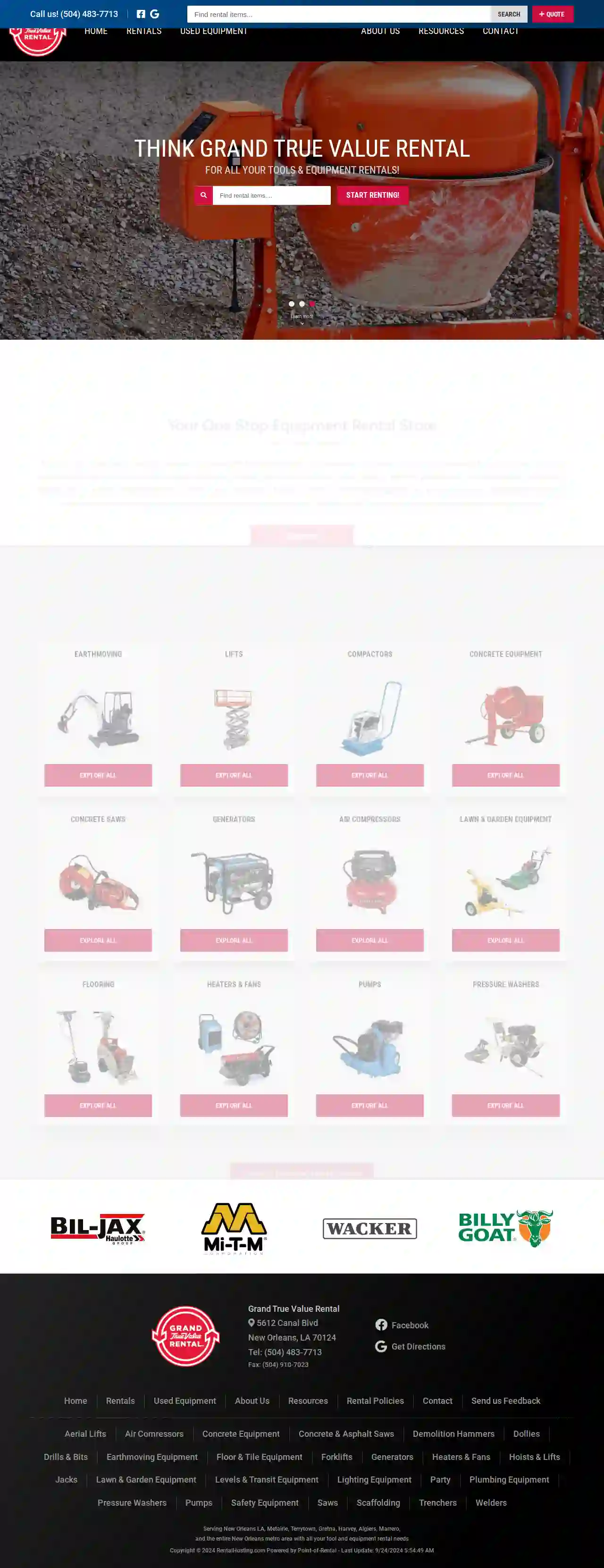
Grand True Value Rental
4.790 reviews5612 Canal Blvd, New Orleans, 70124, USAt Grand True Value Rental, we pride ourselves on making the tool & equipment rental experience a pleasant and hassle free one for the homeowner and small contractor. We service the entire New Orleans Metro Area, including the cities of Metairie, Gretna, Harvey, Terrytown and Marrero. Like most natives, we couldn’t imagine living or working anywhere else! You don’t have to be building a bridge or erecting a skyscraper to get our best effort. We have an equipment rental fleet of tools and small to mid-size equipment based on the needs of our customers. We also stock the supplies and accessories to help get the job done.
- Services
- Why Us?
- Our Team
- Gallery
Get Quote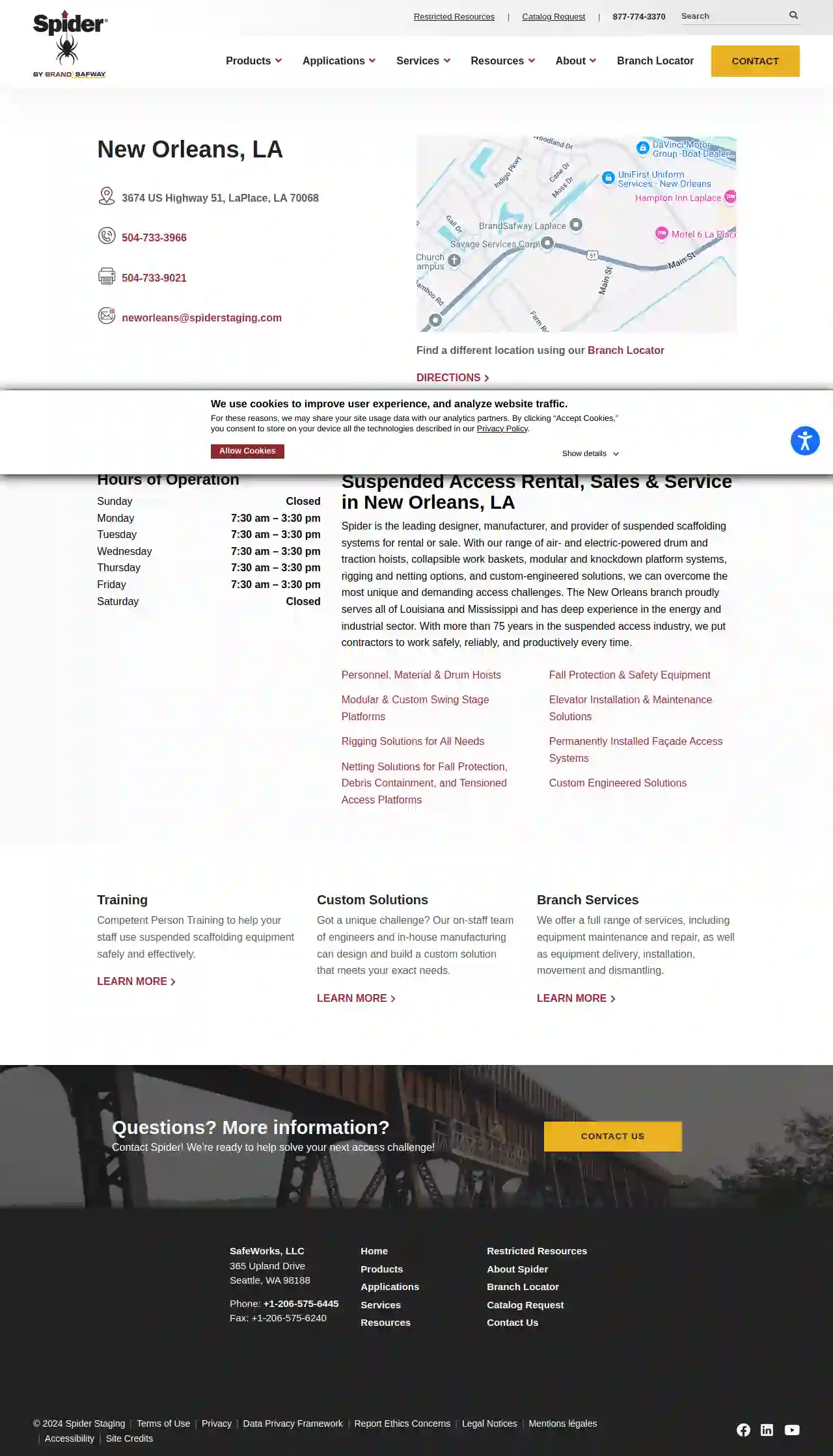
Spider by BrandSafway
LaPlace, LA, 3674 US Highway 51, New Orleans, 70068, USSpider is the leading designer, manufacturer, and provider of suspended scaffolding systems for rental or sale. With our range of air- and electric-powered drum and traction hoists, collapsible work baskets, modular and knockdown platform systems, rigging and netting options, and custom-engineered solutions, we can overcome the most unique and demanding access challenges.
- Services
- Why Us?
- Accreditations
- Gallery
Get Quote
Excel Modular Scaffold
123 Main St, Walker, 70880, USAt Excel Modular Scaffold, our strength is our people, driving our growth and success. We boast the best talent retention record, with highly-trained and seasoned professionals. Our mission: to deliver first-class service with the best industry experts. We EXCEL at what we do. With custom components and approaches for any project, Excel is the solution for complex projects. From airlifting scaffold to temporary jig stands, we are always innovating approaches that will save time and money. Our internal engineering and technical services department employs cutting-edge CAD technology, featuring 2D, 3D and 3D-overlay capabilities, to manage even the most complex configurations. We are always on the lookout for top-tier talent to enhance our dynamic team from safety experts and construction managers, to field superintendents and skilled craftsmen. We aim to cultivate an environment where every worker takes personal responsibility for ensuring a safe and secure workplace for both themselves and their peers.
- Services
- Why Us?
- Accreditations
- Our Team
- Gallery
Get Quote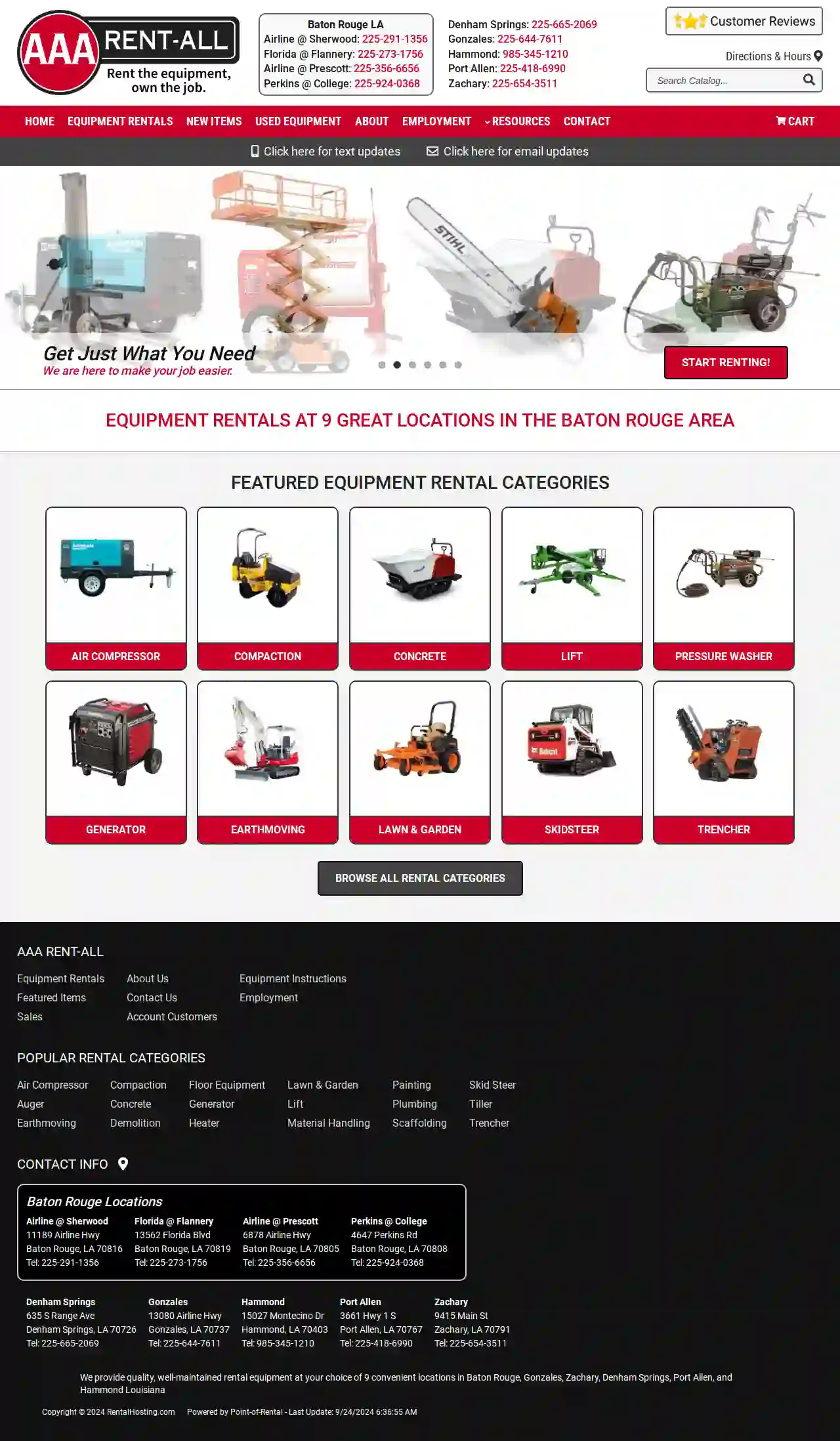
AAA Rent All
4.414 reviewsBaton Rouge, LA, 11189 Airline Hwy, 70816, USAAA Rent-All provides quality, well-maintained rental equipment at your choice of 9 convenient locations in Baton Rouge, Gonzales, Zachary, Denham Springs, Port Allen, and Hammond Louisiana. We offer a wide range of equipment rentals including air compressors, compactors, concrete equipment, lifts, pressure washers, generators, earthmoving equipment, lawn and garden equipment, skid steers, tillers, and trenchers. Our mission is to make your job easier by providing the best equipment rentals.
- Services
- Why Us?
- Accreditations
- Our Team
- Testimonials
- Gallery
Get Quote
AAA Rent All
4.4115 reviewsBaton Rouge, LA, 11189 Airline Hwy, 70816, USAAA Rent-All provides quality, well-maintained rental equipment at your choice of 9 convenient locations in Baton Rouge, Gonzales, Zachary, Denham Springs, Port Allen, and Hammond Louisiana. We offer a wide range of equipment rentals including air compressors, compactors, concrete equipment, lifts, pressure washers, generators, earthmoving equipment, lawn and garden equipment, skid steers, tillers, and trenchers. Our mission is to make your job easier by providing the best equipment rentals.
- Services
- Why Us?
- Accreditations
- Our Team
- Testimonials
- Gallery
Get Quote
Mr Nola Store LLC
4.621 reviewsKenner LA 70062, United States suite 104, 819 Veterans Memorial Blvd Kenner LA, Kenner, 70062, USAt Mr. Nola Store, we take pride in being your premier destination for top-quality scaffold accessories and tools. With a commitment to excellence and customer satisfaction, we strive to provide the finest products to meet your scaffolding needs. Our Products: Scaffold Tool Belt: Our scaffold tool belts are designed with durability and functionality in mind. Crafted from high-quality materials, they offer convenience and efficiency, ensuring you have your essential tools within reach while working at heights. Scaffold Ratchet 7/8: Engineered for reliability and precision, our scaffold ratchets are indispensable tools for secure assembly and disassembly of scaffolding systems. With a focus on safety and performance, our 7/8 scaffold ratchets deliver exceptional results every time. Tool Holder: Keep your tools organized and easily accessible with our tool holders. Designed to securely hold various tools, these holders are essential for maintaining an efficient and clutter-free workspace. Whether you need to store wrenches, hammers, or other equipment, our tool holders offer the perfect solution. Why Choose Mr. Nola Store: Quality Assurance: We source our products from trusted manufacturers, ensuring they meet the highest standards of quality and reliability. Expertise: With years of experience in the industry, we have the knowledge and expertise to assist you in finding the right tools for your specific requirements. Customer Satisfaction: Your satisfaction is our top priority. We are committed to providing exceptional customer service and support to ensure a seamless shopping experience. Experience the difference with Mr. Nola Store - your ultimate destination for scaffold tools and accessories.
- Services
- Why Us?
- Accreditations
- Gallery
Get Quote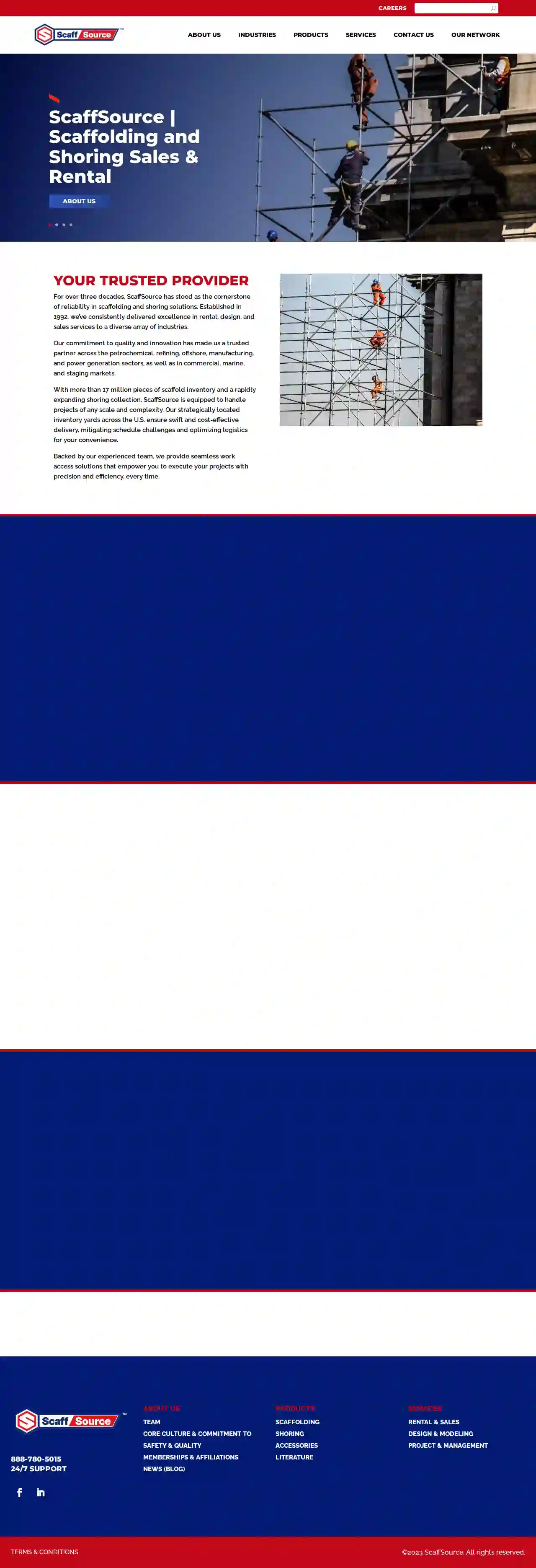
SCAFFSOURCE
Suite 100, Scaff City, 123 Scaffolding Lane, 12345, USScaffSource is a premier provider of scaffolding and shoring equipment sales and rentals, serving the petrochemical, refining, offshore, manufacturing, and power generation industries, as well as the commercial, marine, and staging markets. With over 17 million pieces of scaffold inventory and a large, growing inventory of shoring, ScaffSource has the capacity to deliver a material rental program specific to your unique contractual requirements. Strategically located inventory yards throughout the U.S. mitigate possible schedule challenges and optimize logistics, keeping freight costs as low as possible. The experienced ScaffSource team provides ideal work access solutions so you have exactly what you need to successfully execute every project.
- Services
- Why Us?
- Accreditations
- Our Team
- Testimonials
- Gallery
Get Quote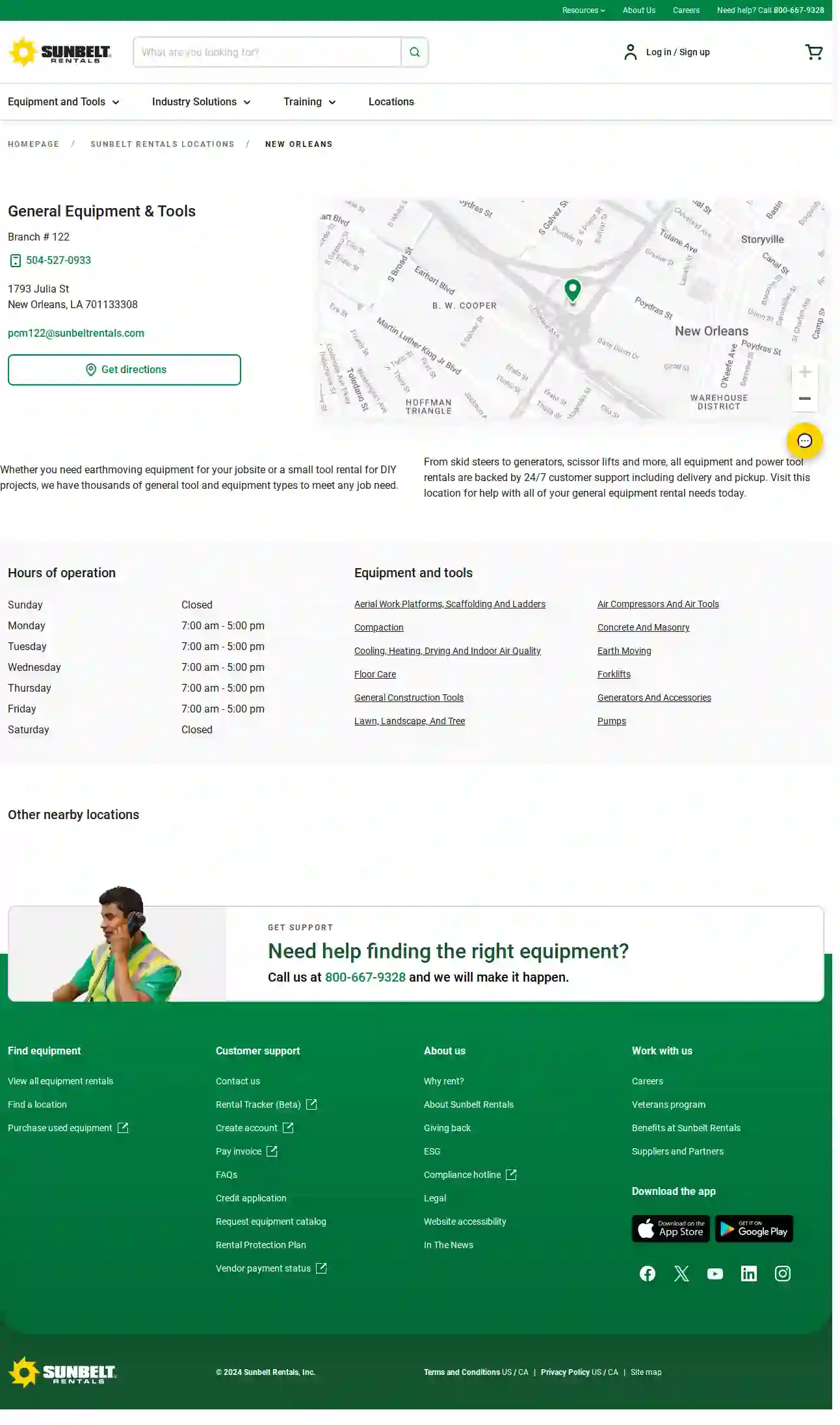
Sunbelt Rentals
439 reviewsNew Orleans, USSunbelt Rentals is a leading equipment rental company providing a wide range of aerial work platforms, scaffolding, ladders, cranes, boom trucks, and more. With a strong commitment to customer support, they offer a user-friendly app for finding, renting, and returning equipment. Their team is dedicated to helping customers find the right equipment for their projects, and their customer support team is available to assist with any questions or concerns.
- Services
- Why Us?
- Gallery
Get Quote
Over 2,353+ Scaffolding Contractors onboarded
Our scaffolding contractors operate in Addis and surrounding areas!
ScaffoldingHQ has curated and vetted the Best Scaffolding Businesses arround Addis. Find a top & reliable pro today.
Frequently Asked Questions About Scaffolding Companies
- Communicate with the Scaffolding Company: Clearly express your concerns about potential damage to landscaping, structures, or utilities.
- Clear the Area: Remove any valuable or fragile items from the work zone.
- Protect Landscaping: Cover plants, shrubs, and lawns with tarps or protective sheeting.
- Mark Underground Utilities: Ensure underground utilities (water lines, electrical cables) are marked and avoided during installation.
- Supervision: If possible, be present during erection and dismantling to monitor the process.
- Regulations: Local regulations often specify minimum inspection intervals.
- Project Type and Duration: Long-term projects or those in challenging environments may require more frequent inspections.
- Weather Conditions: Severe weather (storms, high winds) can necessitate additional inspections.
- Any Alterations or Modifications: Any changes to the scaffolding structure require re-inspection.
- Project Size and Complexity: The height, configuration, and accessibility of the scaffolding will influence the amount of materials and labor required.
- Scaffolding Type: Different scaffolding systems (tube and clamp, system scaffolding, suspended scaffolding) have varying costs.
- Duration of Rental: The length of time you need the scaffolding will affect the overall rental price.
- Location: Labor costs and material availability can differ based on your location.
- Additional Services: Some companies may offer additional services like erection, dismantling, or transportation, which can add to the cost.
- Stability and Level: The scaffolding is level and firmly supported by a solid foundation.
- Secure Connections: All components (tubes, clamps, fittings) are properly connected and tightened.
- Guardrails and Toeboards: Adequate guardrails and toeboards are in place to prevent falls.
- Platforms and Decking: Platforms are secure, free from damage, and provide adequate working space.
- Access and Egress: Safe access and exit points are available (ladders, stairs).
- Weather Protection: Appropriate measures are in place to protect workers from adverse weather conditions (e.g., wind screens, covers).
- Clearance from Hazards: The scaffolding is a safe distance from power lines, trees, or other potential hazards.
- Scaffolding Tag: The scaffolding tag is up-to-date and displays the last inspection date, maximum load capacity, and any restrictions.
How do I protect my property from damage during scaffolding erection and dismantling?
How often should scaffolding be inspected?
How much does scaffolding cost to rent in the USA?
What should I look for during a scaffolding inspection?
How do I protect my property from damage during scaffolding erection and dismantling?
- Communicate with the Scaffolding Company: Clearly express your concerns about potential damage to landscaping, structures, or utilities.
- Clear the Area: Remove any valuable or fragile items from the work zone.
- Protect Landscaping: Cover plants, shrubs, and lawns with tarps or protective sheeting.
- Mark Underground Utilities: Ensure underground utilities (water lines, electrical cables) are marked and avoided during installation.
- Supervision: If possible, be present during erection and dismantling to monitor the process.
How often should scaffolding be inspected?
- Regulations: Local regulations often specify minimum inspection intervals.
- Project Type and Duration: Long-term projects or those in challenging environments may require more frequent inspections.
- Weather Conditions: Severe weather (storms, high winds) can necessitate additional inspections.
- Any Alterations or Modifications: Any changes to the scaffolding structure require re-inspection.
How much does scaffolding cost to rent in the USA?
- Project Size and Complexity: The height, configuration, and accessibility of the scaffolding will influence the amount of materials and labor required.
- Scaffolding Type: Different scaffolding systems (tube and clamp, system scaffolding, suspended scaffolding) have varying costs.
- Duration of Rental: The length of time you need the scaffolding will affect the overall rental price.
- Location: Labor costs and material availability can differ based on your location.
- Additional Services: Some companies may offer additional services like erection, dismantling, or transportation, which can add to the cost.
What should I look for during a scaffolding inspection?
- Stability and Level: The scaffolding is level and firmly supported by a solid foundation.
- Secure Connections: All components (tubes, clamps, fittings) are properly connected and tightened.
- Guardrails and Toeboards: Adequate guardrails and toeboards are in place to prevent falls.
- Platforms and Decking: Platforms are secure, free from damage, and provide adequate working space.
- Access and Egress: Safe access and exit points are available (ladders, stairs).
- Weather Protection: Appropriate measures are in place to protect workers from adverse weather conditions (e.g., wind screens, covers).
- Clearance from Hazards: The scaffolding is a safe distance from power lines, trees, or other potential hazards.
- Scaffolding Tag: The scaffolding tag is up-to-date and displays the last inspection date, maximum load capacity, and any restrictions.
